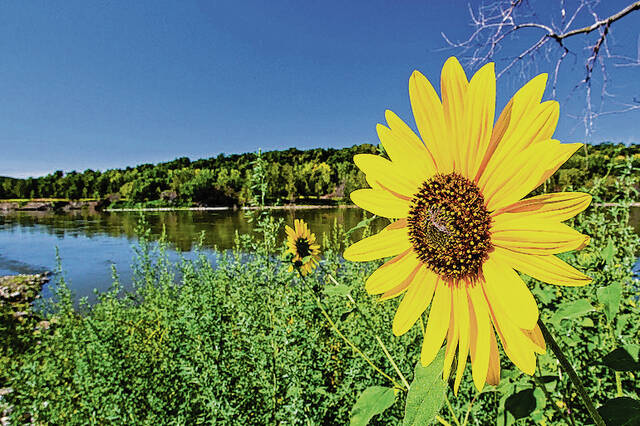It does not take a large tract of land to attract wildlife. There is plenty of room in your backyard to grow and maintain plants, bushes and trees that provide benefits to deer, turkeys, squirrels, birds, butterflies and more.
The list below includes just a few of the options available for creating a backyard habitat for wildlife. You may be surprised at how robust your local wildlife population is once your place becomes the go-to destination for the critters in the neighborhood.
Common sunflower
Hunters and anglers aren’t the only ones who enjoy sunflower seeds. Many bird species, including soulful-sounding mourning doves, love them, as do squirrels, chipmunks and other small mammals. Common sunflowers grow up to 8 feet tall and need about two feet of room to grow. Plant them fully exposed to the sun, and expect blooms to begin mid-summer.
Big bluestem
Above ground, native grasses provide critical habitat for most wildlife species. Down below, the root structures of native grasses grow much deeper than their engineered cousins, providing benefits in soil health and creating robust microbial communities. Big bluestem is a warm season, perennial bunchgrass that grows around six feet tall. Insects will abound in the grasses, meaning birds will too.
Red cedar
If a snowstorm hits and you have red cedars on your place, critters will fight to be there for shelter from the storm. Actually junipers, red cedars are an evergreen that offer birds, deer, rabbits and just about any other animal shelter all year round, but especially in bad weather. The berries provide food from summer through winter. More than 30 moth and butterfly species lay their eggs on red cedar trees.
White oak
Deer walk right past red oaks to find the much sweeter acorns of a white oak. White oak acorns have much less tannic acid than reds, making them more pleasant to the taste. However, they are less hardy, so they’re eaten fast. If given too much time on the ground, they are susceptible to rot. White oaks only grow about a foot per year, so it takes them a while to mature. They won’t begin producing acorns until they’re 20 years old, but a healthy white oak will live hundreds of years, providing a home to countless squirrels.
Crab apple
If one crab apple tree is good, a cluster of them is great. Deer love crab apples, but many more species benefit from these trees. The sweet nectar of crab apple tree flowers is appealing to pollinators, the thick branches provide nesting cover for birds, and the fruit is eaten by insects, birds and mammals. These trees stay relatively small, growing a mere 15 to 20 feet tall. They live up to 70 years.
Blackberry bushes
If you plant blackberry bushes for wildlife, you’ll have to keep yourself from outcompeting the critters for these sweet berries. The bushes do best in climates with warm days and cool nights. Plant them in well-draining soil. They like sandy areas. Make sure you plant your bushes where they have plenty of room to spread out. Blackberries will climb a trellis if you provide one. Once the berries are ripe, birds will gorge on them, but so will bears. Watch out if you’re in bear country.
These six plantings are just a small sampling of options to help you draw and hold wildlife to your backyard. You don’t need to own a large tract of land to make a positive impact on the habitat needed by the local critters in your neck of the woods. With a little time and money invested, your yard can be transformed from a monoculture into a diverse wildlife haven.
An old, unattributed Greek proverb states that “society grows great when old men plant trees whose shade they know they shall never sit in.” Creating habitat for wildlife provides one with a sense of accomplishment and joy hard to explain to those who do not share our love of nature. For those of us who do understand, we are thankful for your efforts. So, too, will be generations of wildlife enthusiasts who may never know your name, but will be grateful for what you did all those years ago.
See you down the trail …





